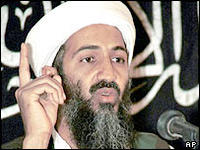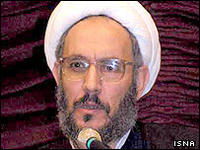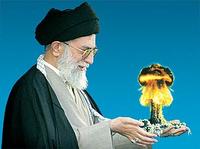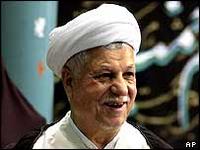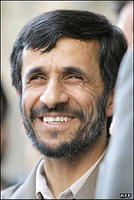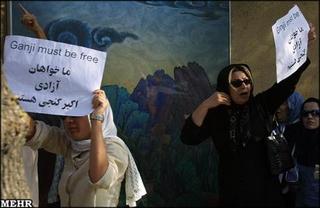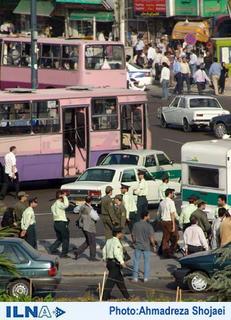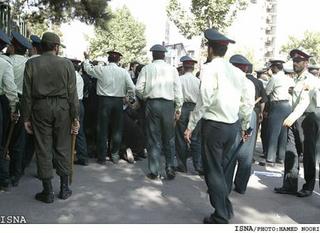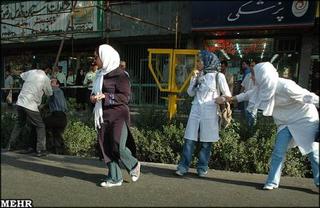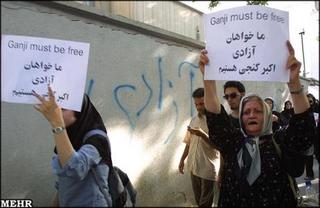The American Conservative: - - : Your new book, Dying to Win, has a subtitle: The Logic of Suicide Terrorism. Can you just tell us generally on what the book is based, what kind of research went into it, and what your findings were?
Robert Pape: Over the past two years, I have collected the first complete database of every suicide-terrorist attack around the world from 1980 to early 2004. This research is conducted not only in English but also in native-language sources—Arabic, Hebrew, Russian, and Tamil and others—so that we can gather information not only from newspapers but also from products from the terrorist community. The terrorists are often quite proud of what they do in their local communities, and they produce albums and all kinds of other information that can be very helpful to understand suicide-terrorist attacks. This wealth of information creates a new picture about what is motivating suicide terrorism. Islamic fundamentalism is not as closely associated with suicide terrorism as many people think. The world leader in suicide terrorism is a group that you may not be familiar with: the Tamil Tigers in Sri Lanka. This is a Marxist group, a completely secular group that draws from the Hindu families of the Tamil regions of the country. They invented the famous suicide vest for their suicide assassination of Rajiv Ghandi in May 1991. The Palestinians got the idea of the suicide vest from the Tamil Tigers.
TAC: So if Islamic fundamentalism is not necessarily a key variable behind these groups, what is?
RP: The central fact is that overwhelmingly suicide-terrorist attacks are not driven by religion as much as they are by a clear strategic objective: to compel modern democracies to withdraw military forces from the territory that the terrorists view as their homeland. From Lebanon to Sri Lanka to Chechnya to Kashmir to the West Bank, every major suicide-terrorist campaign—over 95 percent of all the incidents—has had as its central objective to compel a democratic state to withdraw. TAC: That would seem to run contrary to a view that one heard during the American election campaign, put forth by people who favor Bush’s policy. That is, we need to fight the terrorists over there, so we don’t have to fight them here. RP: Since suicide terrorism is mainly a response to foreign occupation and not Islamic fundamentalism, the use of heavy military force to transform Muslim societies over there, if you would, is only likely to increase the number of suicide terrorists coming at us. Since 1990, the United States has stationed tens of thousands of ground troops on the Arabian Peninsula, and that is the main mobilization appeal of Osama bin Laden and al-Qaeda. People who make the argument that it is a good thing to have them attacking us over there are missing that suicide terrorism is not a supply-limited phenomenon where there are just a few hundred around the world willing to do it because they are religious fanatics. It is a demand-driven phenomenon. That is, it is driven by the presence of foreign forces on the territory that the terrorists view as their homeland. The operation in Iraq has stimulated suicide terrorism and has given suicide terrorism a new lease on life.
TAC: If we were to back up a little bit before the invasion of Iraq to what happened before 9/11, what was the nature of the agitprop that Osama bin Laden and al-Qaeda were putting out to attract people?
RP: Osama bin Laden’s speeches and sermons run 40 and 50 pages long. They begin by calling tremendous attention to the presence of tens of thousands of American combat forces on the Arabian Peninsula. In 1996, he went on to say that there was a grand plan by the United States—that the Americans were going to use combat forces to conquer Iraq, break it into three pieces, give a piece of it to Israel so that Israel could enlarge its country, and then do the same thing to Saudi Arabia. As you can see, we are fulfilling his prediction, which is of tremendous help in his mobilization appeals.
TAC: The fact that we had troops stationed on the Arabian Peninsula was not a very live issue in American debate at all. How many Saudis and other people in the Gulf were conscious of it?
RP: We would like to think that if we could keep a low profile with our troops that it would be okay to station them in foreign countries. The truth is, we did keep a fairly low profile. We did try to keep them away from Saudi society in general, but the key issue with American troops is their actual combat power. Tens of thousands of American combat troops, married with air power, is a tremendously powerful tool. Now, of course, today we have 150,000 troops on the Arabian Peninsula, and we are more in control of the Arabian Peninsula than ever before. TAC: If you were to break down causal factors, how much weight would you put on a cultural rejection of the West and how much weight on the presence of American troops on Muslim territory? RP:The evidence shows that the presence of American troops is clearly the pivotal factor driving suicide terrorism. If Islamic fundamentalism were the pivotal factor, then we should see some of the largest Islamic fundamentalist countries in the world, like Iran, which has 70 million people—three times the population of Iraq and three times the population of Saudi Arabia—with some of the most active groups in suicide terrorism against the United States. However, there has never been an al-Qaeda suicide terrorist from Iran, and we have no evidence that there are any suicide terrorists in Iraq from Iran. Sudan is a country of 21 million people. Its government is extremely Islamic fundamentalist. The ideology of Sudan was so congenial to Osama bin Laden that he spent three years in Sudan in the 1990s. Yet there has never been an al-Qaeda suicide terrorist from Sudan. I have the first complete set of data on every al-Qaeda suicide terrorist from 1995 to early 2004, and they are not from some of the largest Islamic fundamentalist countries in the world. Two thirds are from the countries where the United States has stationed heavy combat troops since 1990. Another point in this regard is Iraq itself. Before our invasion, Iraq never had a suicide-terrorist attack in its history. Never. Since our invasion, suicide terrorism has been escalating rapidly with 20 attacks in 2003, 48 in 2004, and over 50 in just the first five months of 2005. Every year that the United States has stationed 150,000 combat troops in Iraq, suicide terrorism has doubled.
TAC: So your assessment is that there are more suicide terrorists or potential suicide terrorists today than there were in March 2003?
RP: I have collected demographic data from around the world on the 462 suicide terrorists since 1980 who completed the mission, actually killed themselves. This information tells us that most are walk-in volunteers. Very few are criminals. Few are actually longtime members of a terrorist group. For most suicide terrorists, their first experience with violence is their very own suicide-terrorist attack. There is no evidence there were any suicide-terrorist organizations lying in wait in Iraq before our invasion. What is happening is that the suicide terrorists have been produced by the invasion.
TAC: Do we know who is committing suicide terrorism in Iraq? Are they primarily Iraqis or walk-ins from other countries in the region?
RP: Our best information at the moment is that the Iraqi suicide terrorists are coming from two groups—Iraqi Sunnis and Saudis—the two populations most vulnerable to transformation by the presence of large American combat troops on the Arabian Peninsula. This is perfectly consistent with the strategic logic of suicide terrorism. TAC: Does al-Qaeda have the capacity to launch attacks on the United States, or are they too tied down in Iraq? Or have they made a strategic decision not to attack the United States, and if so, why? RP:Al-Qaeda appears to have made a deliberate decision not to attack the United States in the short term. We know this not only from the pattern of their attacks but because we have an actual al-Qaeda planning document found by Norwegian intelligence. The document says that al-Qaeda should not try to attack the continent of the United States in the short term but instead should focus its energies on hitting America’s allies in order to try to split the coalition. What the document then goes on to do is analyze whether they should hit Britain, Poland, or Spain. It concludes that they should hit Spain just before the March 2004 elections because, and I am quoting almost verbatim: Spain could not withstand two, maximum three, blows before withdrawing from the coalition, and then others would fall like dominoes. That is exactly what happened. Six months after the document was produced, al-Qaeda attacked Spain in Madrid. That caused Spain to withdraw from the coalition. Others have followed. So al-Qaeda certainly has demonstrated the capacity to attack and in fact they have done over 15 suicide-terrorist attacks since 2002, more than all the years before 9/11 combined. Al-Qaeda is not weaker now. Al-Qaeda is stronger.
TAC: What would constitute a victory in the War on Terror or at least an improvement in the American situation?
RP:For us, victory means not sacrificing any of our vital interests while also not having Americans vulnerable to suicide-terrorist attacks. In the case of the Persian Gulf, that means we should pursue a strategy that secures our interest in oil but does not encourage the rise of a new generation of suicide terrorists. In the 1970s and the 1980s, the United States secured its interest in oil without stationing a single combat soldier on the Arabian Peninsula. Instead, we formed an alliance with Iraq and Saudi Arabia, which we can now do again. We relied on numerous aircraft carriers off the coast of the Arabian Peninsula, and naval air power now is more effective not less. We also built numerous military bases so that we could move large numbers of ground forces to the region quickly if a crisis emerged. That strategy called “offshore balancing,” worked splendidly against Saddam Hussein in 1990 and is again our best strategy to secure our interest in oil while preventing the rise of more suicide terrorists.
TAC:Osama bin Laden and other al-Qaeda leaders also talked about the “Crusaders-Zionist alliance,” and I wonder if that, even if we weren’t in Iraq, would not foster suicide terrorism. Even if the policy had helped bring about a Palestinian state, I don’t think that would appease the more hardcore opponents of Israel.
RP: I not only study the patterns of where suicide terrorism has occurred but also where it hasn’t occurred. Not every foreign occupation has produced suicide terrorism. Why do some and not others? Here is where religion matters, but not quite in the way most people think. In virtually every instance where an occupation has produced a suicide-terrorist campaign, there has been a religious difference between the occupier and the occupied community. That is true not only in places such as Lebanon and in Iraq today but also in Sri Lanka, where it is the Sinhala Buddhists who are having a dispute with the Hindu Tamils. When there is a religious difference between the occupier and the occupied, that enables terrorist leaders to demonize the occupier in especially vicious ways. Now, that still requires the occupier to be there. Absent the presence of foreign troops, Osama bin Laden could make his arguments but there wouldn’t be much reality behind them. The reason that it is so difficult for us to dispute those arguments is because we really do have tens of thousands of combat soldiers sitting on the Arabian Peninsula.
TAC: Has the next generation of anti-American suicide terrorists already been created? Is it too late to wind this down, even assuming your analysis is correct and we could de-occupy Iraq?
RP: Many people worry that once a large number of suicide terrorists have acted that it is impossible to wind it down. The history of the last 20 years, however, shows the opposite. Once the occupying forces withdraw from the homeland territory of the terrorists, they often stop—and often on a dime. In Lebanon, for instance, there were 41 suicide-terrorist attacks from 1982 to 1986, and after the U.S. withdrew its forces, France withdrew its forces, and then Israel withdrew to just that six-mile buffer zone of Lebanon, they virtually ceased. They didn’t completely stop, but there was no campaign of suicide terrorism. Once Israel withdrew from the vast bulk of Lebanese territory, the suicide terrorists did not follow Israel to Tel Aviv. This is also the pattern of the second Intifada with the Palestinians. As Israel is at least promising to withdraw from Palestinian-controlled territory (in addition to some other factors), there has been a decline of that ferocious suicide-terrorist campaign. This is just more evidence that withdrawal of military forces really does diminish the ability of the terrorist leaders to recruit more suicide terrorists. That doesn’t mean that the existing suicide terrorists will not want to keep going. I am not saying that Osama bin Laden would turn over a new leaf and suddenly vote for George Bush. There will be a tiny number of people who are still committed to the cause, but the real issue is not whether Osama bin Laden exists. It is whether anybody listens to him. That is what needs to come to an end for Americans to be safe from suicide terrorism.
TAC: There have been many kinds of non-Islamic suicide terrorists, but have there been Christian suicide terrorists?
RP: Not from Christian groups per se, but in Lebanon in the 1980s, of those suicide attackers, only eight were Islamic fundamentalists. Twenty-seven were Communists and Socialists. Three were Christians. TAC: Has the IRA used suicide terrorism? RP: The IRA did not. There were IRA members willing to commit suicide—the famous hunger strike was in 1981. What is missing in the IRA case is not the willingness to commit suicide, to kill themselves, but the lack of a suicide-terrorist attack where they try to kill others. If you look at the pattern of violence in the IRA, almost all of the killing is front-loaded to the 1970s and then trails off rather dramatically as you get through the mid-1980s through the 1990s. There is a good reason for that, which is that the British government, starting in the mid-1980s, began to make numerous concessions to the IRA on the basis of its ordinary violence. In fact, there were secret negotiations in the 1980s, which then led to public negotiations, which then led to the Good Friday Accords. If you look at the pattern of the IRA, this is a case where they actually got virtually everything that they wanted through ordinary violence. The purpose of a suicide-terrorist attack is not to die. It is the kill, to inflict the maximum number of casualties on the target society in order to compel that target society to put pressure on its government to change policy. If the government is already changing policy, then the whole point of suicide terrorism, at least the way it has been used for the last 25 years, doesn’t come up. TAC: Are you aware of any different strategic decision made by al-Qaeda to change from attacking American troops or ships stationed at or near the Gulf to attacking American civilians in the United States? RP: I wish I could say yes because that would then make the people reading this a lot more comfortable. The fact is not only in the case of al-Qaeda, but in suicide-terrorist campaigns in general, we don’t see much evidence that suicide-terrorist groups adhere to a norm of attacking military targets in some circumstances and civilians in others. In fact, we often see that suicide-terrorist groups routinely attack both civilian and military targets, and often the military targets are off-duty policemen who are unsuspecting. They are not really prepared for battle. The reasons for the target selection of suicide terrorists appear to be much more based on operational rather than normative criteria. They appear to be looking for the targets where they can maximize the number of casualties. In the case of the West Bank, for instance, there is a pattern where Hamas and Islamic Jihad use ordinary guerrilla attacks, not suicide attacks, mainly to attack settlers. They use suicide attacks to penetrate into Israel proper. Over 75 percent of all the suicide attacks in the second Intifada were against Israel proper and only 25 percent on the West Bank itself.
TAC: What do you think the chances are of a weapon of mass destruction being used in an American city?
RP: I think it depends not exclusively, but heavily, on how long our combat forces remain in the Persian Gulf. The central motive for anti-American terrorism, suicide terrorism, and catastrophic terrorism is response to foreign occupation, the presence of our troops. The longer our forces stay on the ground in the Arabian Peninsula, the greater the risk of the next 9/11, whether that is a suicide attack, a nuclear attack, or a biological attack.
Courtesy: The American Conservative



